Photo by Brandon Woyshnis via Adobe Stock. Graphic design by Colin Finkle.
10 Old Lamborghini Models: From the revolutionary Miura to the striking LM002 SUV
Lamborghini has produced some of the most iconic and recognizable vehicles in the automotive world.
Most car people know the modern Lamborghini models, namely the Huracán and Aventador. But many are unaware of Lamborghini’s old models. Some of the past Lamborghini models were genuinely revolutionary.
Did you know Lamborghini was the first to offer a mid-engine road car? That was the Miura. Or that the iconic wedge shape people imagine when picturing a Lamborghini started with the Countach?
For car enthusiasts, the history of Lamborghini is fascinating. There are many twists and turns in Lamborghini’s story. From starting with tractors, to the transition from GT cars to supercars, developing military vehicles, and naming their cars after Spanish fighting bulls, the eclectic history has resulted in a brand with a rich heritage.
In this article, we’re going to make a list of Lamborghini’s old models that stand apart.
Vintage Lamborghini Models
Miura
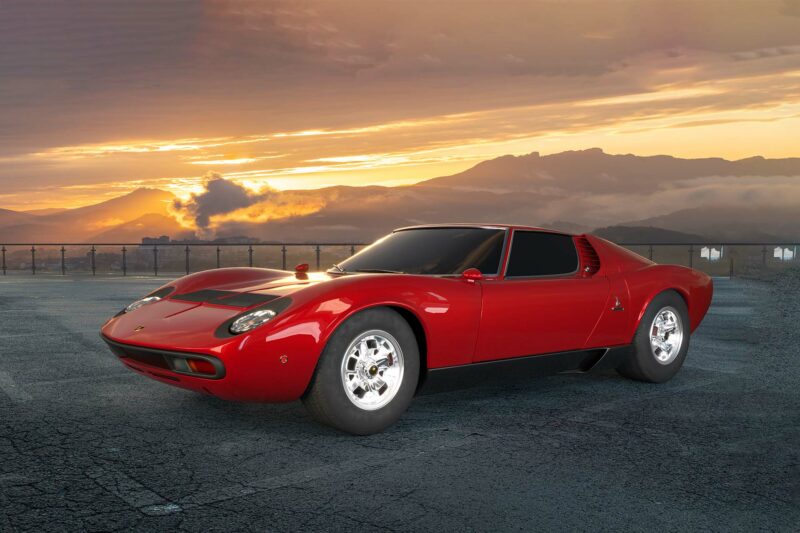
The Lamborghini Miura is one of the most iconic Lamborghini models ever created. Introduced in 1966 and ready for purchase in 1967, the Miura was the first mid-engined, two-seater supercar. It set the standard for future Lamborghini models.
The Miura was powered by a 3.9-liter V12 engine and could achieve a top speed of 171 mph, remarkable for the time. The Miura might have been one of the best looking cars, but it wasn’t the best driving car. It was proned to sudden oversteer with the rear wheels slipping out and the car spinning around mid-corner. It was also proned to engine fires.
But it was clear to all that the car was revolutionary and special. It is one of the most valuable classic cars in the world of all makes. And Lamborghini went on to work the kinks out of the mid-engine, 2-seat sports car format with the Countach and then the Diablo.
Countach
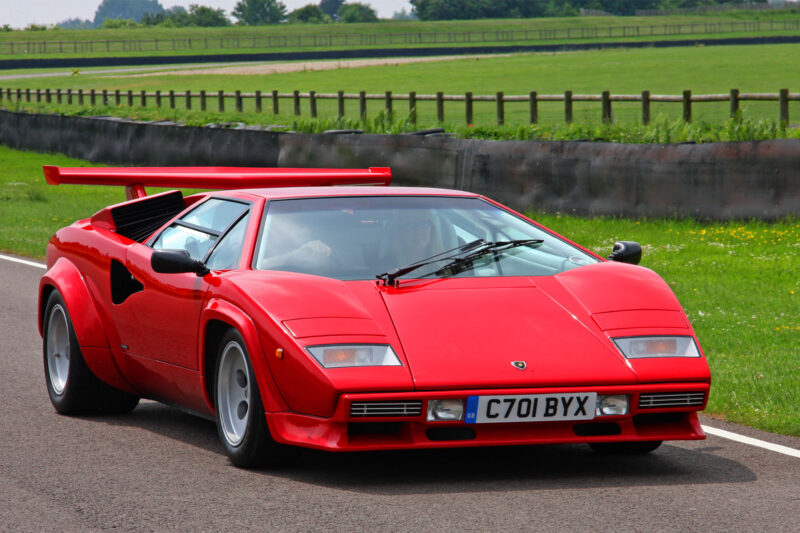
The Lamborghini Countach was introduced in 1974 and featured a striking, angular design that was unlike anything else on the market. It was powered by a 3.9-liter V12 engine and could reach a speed of 183 mph.
The Countach was the first Lamborghini to feature the wedge shape that has defined the brand for nearly 50 years. It was also the first Lamborghini to feature scissor doors.
Lamborghini recently commemorated the Countach with a limited-production supercar: The Countach LPI 800-4.
Diablo
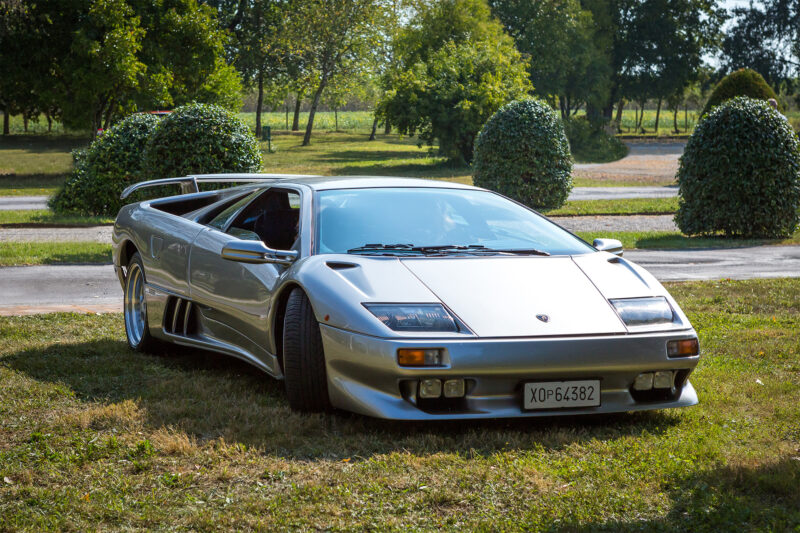
The Lamborghini Diablo was the successor to the Countach, introduced in 1990. The design doubled down on the wedge shape, cementing the iconic form of a Lamborghini in people’s minds.
The Diablo was powered by a 5.7-liter V12 engine and was capable of a top speed of 202 mph (325 km/h).
The Diablo was refined over the long (11-year) model run. Audi influenced the final versions of the Diablo after Volkswagen purchased Lamborghini in 1998.
Islero
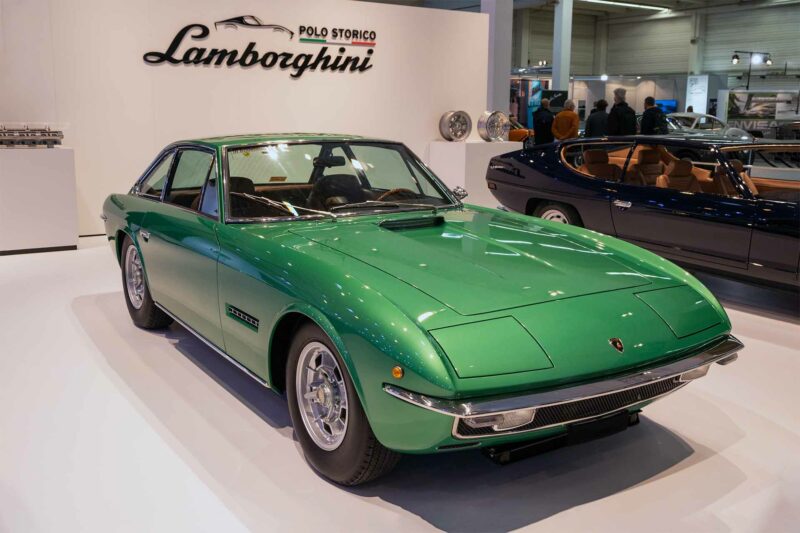
The Lamborghini Islero was introduced in 1968 being one of the front-engine grand touring cars Ferruccio Lamborghini founded Lamborghini to make. It was powered by a 3.9-liter V12 engine and was capable of a top speed of 154 mph (248 km/h).
The Islero was sleek and stylish but different from how we think of Lamborghini cars nowadays. It’s more ‘cruise in wine country’ than the ‘rip beside Miami beach’ we associate with Lamborghini now.
LM002
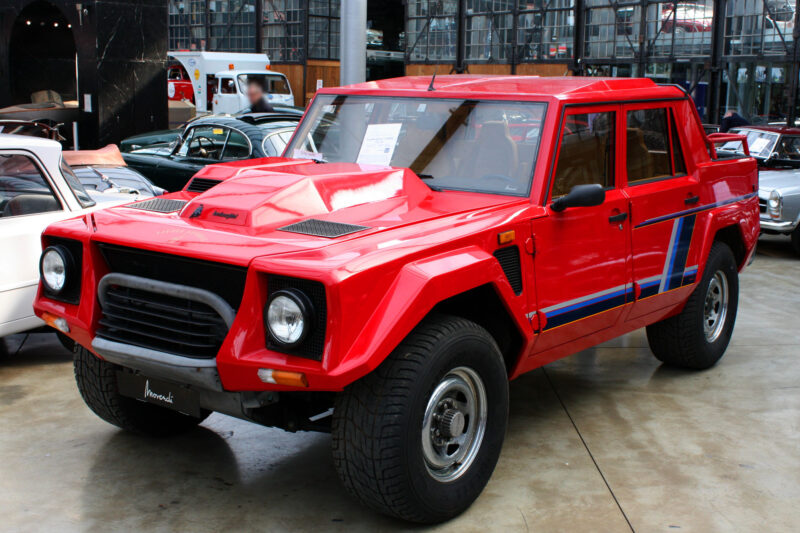
The Lamborghini LM002 was a four-wheel drive off-road SUV introduced in 1986.
It was powered by a 5.2-liter V12 engine; an interesting choice for a potential military vehicle, but oddly, it makes sense.
The development of the LM002 was fascinating; Lamborghini truly believed they had a shot at developing an all-terrain military vehicle for the Italian army and militaries worldwide. The military contracts never came, but the affluent buyer benefitted by getting one of the most exciting and exotic SUVs ever.
350GT
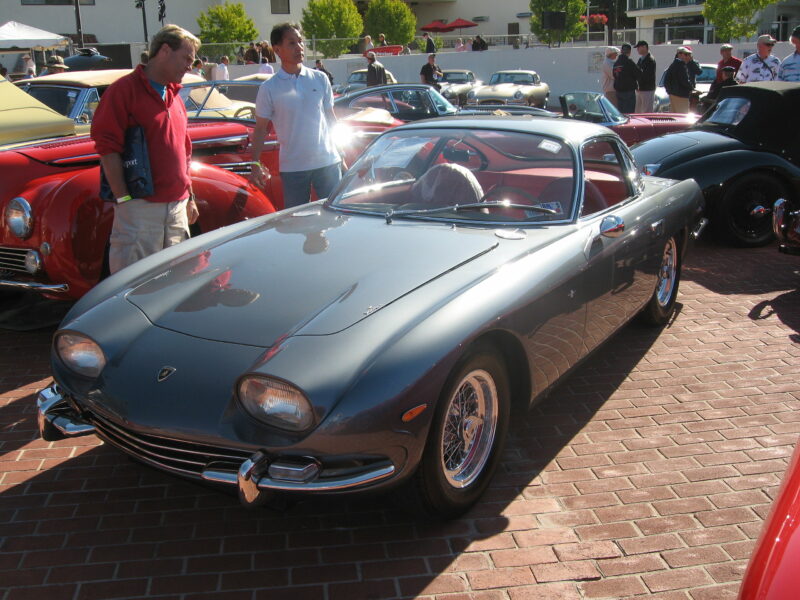
The Lamborghini 350GT was introduced in 1964 and was the first production model from Lamborghini. The 350GT was the car Ferruccio Lamborghini developed to spite Enzo Ferrari after the two Italian magnates fought over the mechanics of clutches in Ferrari models.
It was powered by a 3.5-liter V12 engine and was capable of a top speed of 150 mph.
The 350GT was a classy cruiser meant to fly over hillside roads, not the race track. Lamborghini eventually pivoted away from GT cars to supercars in the late 60s and 70s.
Espada
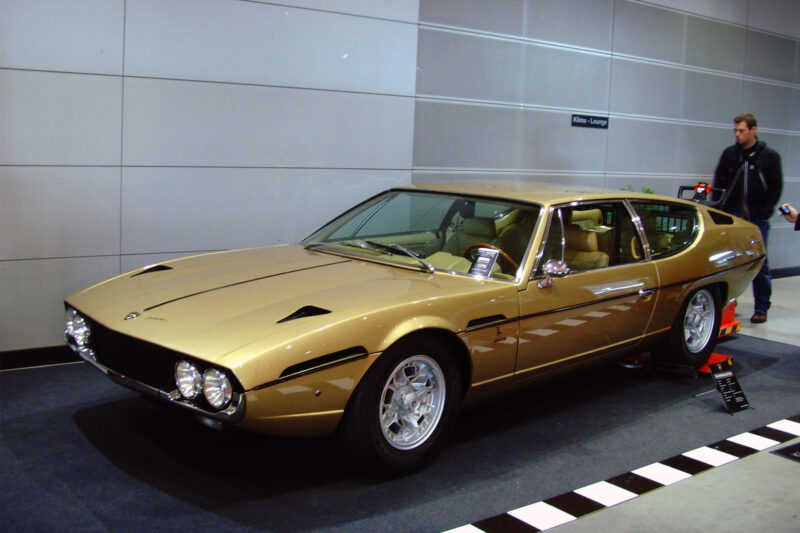
The Lamborghini Espada was introduced in 1968 and was the successor to the 400GT. It was a front-engined 2+2, not the mid-engine 2-seaters we now associate with Lamborghini.
Out were the 50s-era curves and grills of the 400GT, and it was the boxy and muscular look of the 1960s. The Espada comfortably sat four people who could listen to the 3.9L V12 purring away as they toured the countryside.
This large grand touring car was sold alongside the petite Miura, a small two-seat supercar.
Silhouette
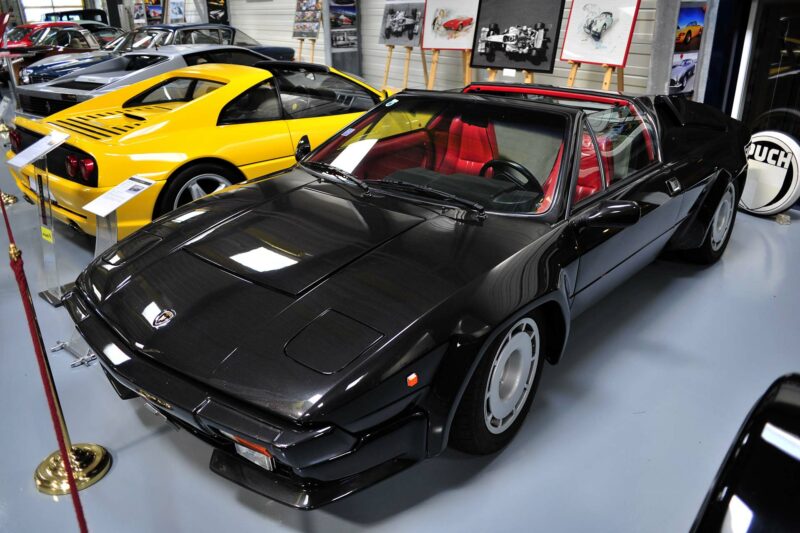
The Lamborghini Silhouette was introduced in 1976; a two-door, two-seat sports car with a mid-mounted V8.
It replaced the Urraco, which was similar but larger and a 4-seater. By the mid-70s, it was clear the world wanted two-seat mid-engine sports cars from Lamborghini.
The Silhouette was supposed to be a less expensive, more accessible, entry-level alternative to the Countach – Lamborghini’s first runaway success. But no one seemed interested in the baby Lambo. They didn’t make many before the Silloutette was replaced by the Jalpa.
Murcielago
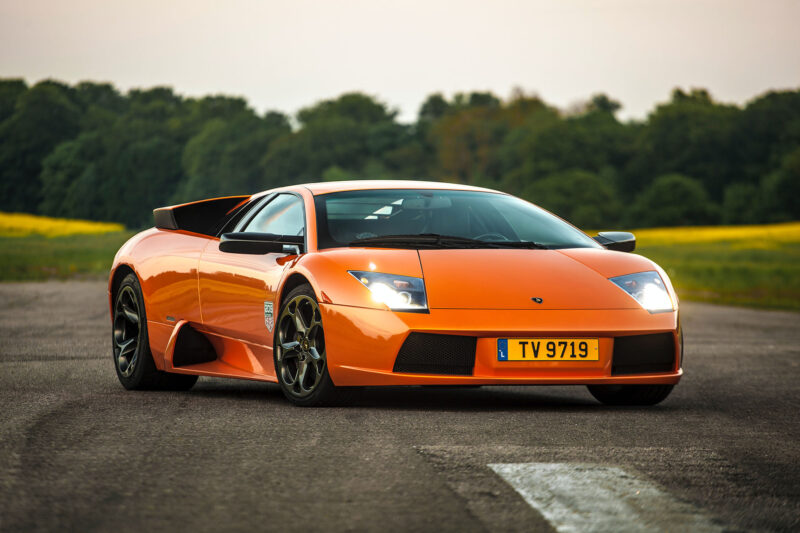
The newest car on this list, the Murcielago, may be pushing the idea of “vintage” as it is part of the new era of Lamborghini (the time after Lamborghini was purchased by the Audi division of VW.) The Murcielago shares a lot with the Aventador, the just-retired flagship supercar for Lamborghini.
But the Murcielago is quickly becoming a modern classic. Manual transmission cars are becoming desirable and valuable because they are the last analog driving experience. A V12 and transmission directly controlled by the driver with no computer getting in the way is something every supercar enthusiast should experience.
Jarama
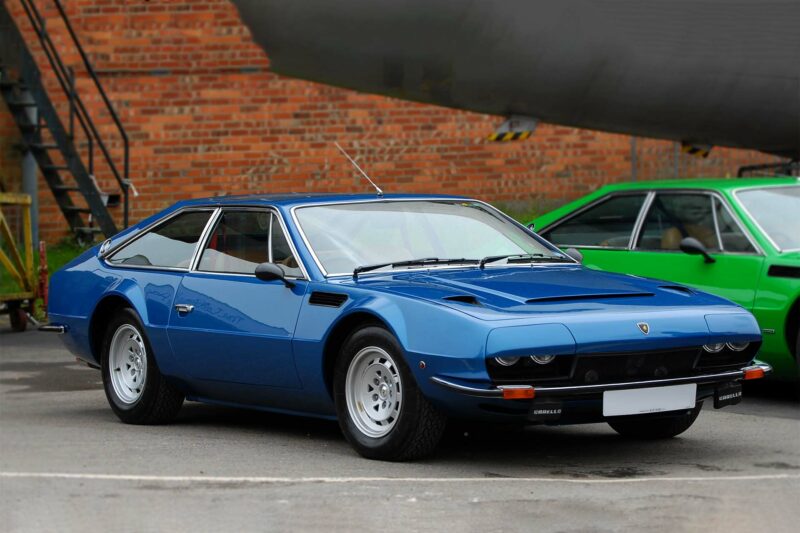
The Lamborghini Jarama was the last shot the company would take at the 2+2 grand touring car. The Jarama was the end of the model line that returned to Lamborghini’s first car, the 350GT. The 350 GT turned into the 400GT, which went to the Islero and ended with the Jarama.
The Jarama was introduced in 1970, and they didn’t make many of them. By the mid-70s, it was clear that the market wanted Lamborghini to focus on the 2-seat, mid-engined sports cars that the Lamborghini pioneered.
The Jarama was styled by Marcello Gandini, who designed beautiful cars like the Miura and the Countach. But the Jarama is famously ugly.
Conclusion
Lamborghini has produced some of the most iconic and recognizable vehicles in the automotive world. From the classic Miura to the modern-day Huracan, Lamborghini has created some of the most iconic vintage Lamborghini models ever made.
In this article, we have looked at some of the most iconic vintage Lamborghini models ever made, and it is clear to see why these vehicles are so popular with car enthusiasts worldwide.
If you enjoyed that article and want to learn more about the full lineup of Lamborghini model, check out our complete list of Lamborghini’s production models. You’d be amazed at some of the crazy limited run models!

Leave a Reply